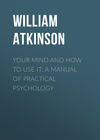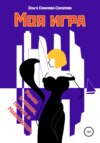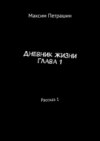Читать книгу: «Your Mind and How to Use It: A Manual of Practical Psychology», страница 8
CHAPTER XXI
Conception
THE process of conception has been well defined by Gordy as "that act of mind by which it forms an idea of a class; or that act of the mind that enables us to use general names intelligently." He adds: "It is, of course, understood that I am using the word 'class' to denote an indefinite number of individuals that resemble each other in certain particulars."
Perception
The first step in conception, as we have seen, is that of perception. It is readily perceived that the character of our intellectual processes depends materially upon the variety, clearness, and accuracy of our perceptions. Therefore, again, we would refer our students to the chapter in which we have stated the importance of clear perception.
Memory
The future steps of conception depend materially upon the clearness of the memory, as we can classify objects only by remembering their qualities beyond the immediate moment of actual, original perception. Therefore, the memory should be strengthened for this as well as other objects.
Abstraction
The second step in conception is that of the mental abstraction of qualities from the observed thing. That is, we must perceive and then mentally set aside the observed qualities of the thing. For instance, man first perceived the existence of certain qualities in things. He found that a certain number of things possessed some of these qualities in common, while others possessed other qualities in the same way, and thus arose classification from comparison. But both comparison and classification are possible only by abstraction, or the perception of the quality as a "thing"; thus, the abstraction of the idea of the quality of sweetness from the idea of sugar. Sweetness is a quality rather than a thing itself. It is something possessed by sugar which helps to make sugar what it is.
Color, shape, size, mental qualities, habits of action – these are some of the qualities first observed in things and abstracted from them in thought. Redness, sweetness, hardness, softness, largeness, smallness, fragrance, swiftness, slowness, fierceness, gentleness, warmness, coldness, etc. – these are abstracted qualities of things. Of course these qualities are really never divorced from things, but the mind divorces them in order to make thinking easier. An authority says: "Animals are incapable of making abstractions, and that is the reason why they cannot develop formal thought. * * * Abstract thought is identical with rational thought, which is the characteristic feature of the thought of speaking beings. This is the reason why abstract thought is upon earth the exclusive property of man, and why brutes are incapable of abstract thought. The process of naming is the mechanism of abstraction, for names establish the mental independence of the objects named."
The processes of abstraction depend upon attention – concentrated attention. Attention directed to the qualities of a thing tends to abstract the qualities in thought from the thing itself. Mill says: "Abstraction is primarily the result of attention." Hamilton says: "Attention and abstraction are only the same process viewed in different relations." Cultivation of the power of abstraction means principally cultivation of attention. Any mental activity which tends toward analysis or separation of a thing into its parts, qualities, or elements will serve to cultivate and develop the power of abstraction.
The habit of converting qualities into concepts is acquired by transforming adjective terms into their corresponding noun terms. For instance, a piece of colored candy possesses the qualities of being round, hard, red, sweet, etc. Transforming these adjective qualities into noun terms we have the concepts of roundness, hardness, redness, and sweetness, respectively.
Comparison
The third step in conception is that of comparison, in which the qualities of several things are compared or examined for likenesses and differences. We find many qualities in which the several things differ, and a few in which there is a likeness. Classes are formed from resemblances or likenesses, while individuals are separated from apparent classes by detection of differences. Finally, it is found that separate things, while having many points of difference which indicate their individuality, nevertheless have a few points of likeness which indicate that they belong to the same general family or class. The detection of likenesses and differences in the qualities of various things is an important mental process. Many of the higher thought processes depend largely upon the ability to compare things properly. The development of attention and perception tends to develop the power of comparison.
Classification or Generalization
The fourth step in conception is that of classification or generalization, whereby we place individual things in a mental bundle or class, and then this bundle in company with other bundles into a higher class, and so on. Thus we group all the individual small birds having certain characteristics into a species, then several related species into a larger family, and this into a still larger, until finally we group all the bird families into the great family which we call "birds" and of which the simple term "bird" expresses the general concept.
Jevons says: "We classify things together whenever we observe that they are like each other in any respect, and therefore think of them together. In classifying a collection of objects, we do not merely put together into groups those which resemble each other, but we also divide each class into smaller ones in which the resemblance is more complete. Thus the class of white substances may be divided into those which are solid, and those which are fluid, so that we get the two minor classes of solid-white and fluid-white substances. It is desirable to have names by which to show that one class is contained in another, and, accordingly, we call the class which is divided into two or more smaller ones the genus, and the smaller ones into which it is divided, the species."
Every species is a small family of the individuals composing it, and at the same time is an individual species of the genus just above it; the genus, in turn, is a family of several species, and at the same time an individual genus in the greater family or genus above it.
The student may familiarize himself with the idea of generalization by considering himself as an individual, John Smith. John represents that unit of generalization. The next step is to combine John with the other Smiths of his immediate family. Then this family may be grouped with his near blood relations, and so on, until finally all the related Smiths, near and remote, are grouped together in a great Smith family.
Or, in the same way, the family group may be enlarged until it takes in all the white people in a county, then all the white people in the state, then all in the United States; then all the white races, then all the white and other light-skinned races, then all mankind. Then, if one is inclined, the process may be continued until it embraces every living creature from moneron to man. Reversing the process, living creatures may be divided and subdivided until all mankind is seen to stand as a class. Then the race of man may be divided into sub-races according to color; then the white race may be subdivided into Americans and non-Americans. Then the Americans may be divided into inhabitants of the several states, or into Indianans and non-Indianans; then into the inhabitants of the several counties of Indiana, and thus the Posey Countians are reached. Then the Posey County people are divided into Smiths and non-Smiths; then the Smith family into its constituent family groups, and then into the smaller families, and so on, until the classification reaches one particular John Smith, who at last is found to be an individual – in a class by himself. This is the story of the ascending and descending processes of generalization.
CHAPTER XXII
Classes of Concepts
IN the preceding chapter we have seen the process of conception – of the forming of concepts. The idea of a general class of things or qualities is a concept. Each concept contains the qualities which are common to all the individuals composing the class, but not those qualities which pertain only to the minor classes or the individuals. For instance, the concept of "bird" will necessarily include the common qualities of warm-bloodedness, featheredness, wingedness, oviparousness, and vertebratedness. But it will not include color, special shape, size, or special features or characteristics of the subfamilies or individuals composing the great class. The class comprises the individuals and subclasses composing it; the concept includes the general and common qualities which all in the class possess. A percept is the mental image of a particular thing; a concept is the mental idea of the general qualities of a class of things. A percept arises from the perception of a sensation; a concept is a purely mental, abstract creation, whose only existence is in the world of ideas and which has no corresponding individual object in the world of sense.
There are two general classes of concepts, namely: (1) concrete concepts, in which the common qualities of a class of things are combined into one conceptual idea, such as "bird," of which we have spoken; (2) abstract concepts, in which is combined the idea of some quality common to a number of things, such as "sweetness" or "redness." Jevons's well-known rule for terms is an aid in remembering this classification: "A concrete term is the name of a thing; an abstract term is the name of a quality of a thing."
It is a peculiar fact and rule of concrete concepts that (1) the larger the class of things embraced in a concept, the smaller are its general qualities; and (2) the larger the number of general qualities included in a concept, the smaller the number of individuals embraced by it. For instance, the term "bird" embraces a great number of individuals – all the birds that are in existence, in fact, but it has but few general qualities, as we have seen. On the contrary, the concept "stork" has a much larger number of general qualities, but embraces far fewer individuals. Finally, the individual is reached, and we find that it has more qualities than any class can have; but it is composed of the smallest possible number of individuals, one. The secret is this: No two individuals can have as many qualities in common as each has individually, unless they are precisely alike, which is impossible in nature.
Imperfect Concepts
It is said that outside of strictly scientific definitions very few persons agree in their concepts of the same thing. Each has his or her own concept of the particular thing which he or she expresses by the same term. A number of persons asked to define a common term like "love," "religion," "faith," "belief," etc., will give such a variety of answers as to cause wonderment. As Green says: "My idea or image is mine alone – the reward of careless observation if imperfect; of attentive, careful, and varied observation if correct. Between mine and yours a great gulf is fixed. No man can pass from mine to yours, or from yours to mine. Neither in any proper sense of the term can mine be conveyed to you. Words do not convey thoughts; they are not vehicles of thoughts in any true sense of that term. A word is simply a common symbol which each associates with his own idea or image."
The reason of the difference in the concepts of several persons is that very few of our concepts are nearly perfect; the majority of them are quite imperfect and incomplete. Jevons gives us an idea of this in his remarks on classification: "Things may seem to be very much like each other which are not so. Whales, porpoises, seals, and several other animals live in the sea exactly like a fish; they have a similar shape and are usually classed among fish. People are said to go whale fishing. Yet these animals are not really fish at all, but are much more like dogs and horses and other quadrupeds than they are like fish. They cannot live entirely under water and breathe the air contained in the water like fish, but they have to come to the surface at intervals to take breath. Similarly, we must not class bats with birds because they fly about, although they have what would be called wings; these wings are not like those of birds, and, in truth, bats are much more like rats and mice than they are like birds. Botanists used at one time to classify plants according to their size, as trees, shrubs, or herbs, but we now know that a great tree is often more similar in character to a tiny herb than it is to other great trees. A daisy has little resemblance to a great Scotch thistle; yet the botanist regards them as very similar. The lofty growing bamboo is a kind of grass, and the sugar cane also belongs to the same class with wheat and oats."
It is a matter of importance that clear concepts should be formed regarding at least the familiar things of life. The list of clear concepts should be added to from time to time by study, investigation, and examination. The dictionary should be consulted frequently, and a term studied until one has a clear meaning of the concept the term seeks to express. A good encyclopedia (not necessarily an expensive one, in these days of cheap editions) will also prove very useful in this respect. As Halleck says: "It must be borne in mind that most of our concepts are subject to change during our entire life; that at first they are made only in a tentative way; that experience may show us, at any time, that they have been erroneously formed, that we have abstracted too little or too much, made the class too wide or too narrow, or that here a quality must be added or there one taken away."
It is a good practice to make a memorandum of anything of which you may hear, but of which you know nothing, and then later to make a brief but thorough investigation of that thing, by means of the dictionary and encyclopedia, and of whatever good works may be obtained on the subject, not leaving it until you feel that you have obtained at least a clear idea of what the thing really means. A half hour each evening devoted to exercise of this kind will result in a wonderful increase of general information. We have heard of a man who made a practice of reading a short article in the encyclopedia every evening, giving preference to subjects generally classed as familiar. In a year he made a noticeable advance in general knowledge as well as habits of thought. In five years he was looked upon by his associates as a man of a remarkably large field of general information and of more than ordinary intelligence, which verdict was a just one. As a rule we waste far more time on worthless fiction than we are willing to devote to a little self-improvement of this kind. We shrink at the idea of a general course of instructive reading, little realizing that we can take our study in small installments and at a very little cost in time or labor.
Our concepts form the material which our intellect uses in its reasoning processes. No matter how good a reasoner one may be, unless he has a good supply of general information about the things of which he is reasoning, he will not make much real headway. We must begin at the bottom and build a firm foundation upon which the intellectual structure may be erected. This foundation is composed of facts. These facts are represented by our clear and correct concepts.
CHAPTER XXIII
Judgments
WE have seen the several steps of the mental process whereby simple sensations are transformed into percepts and then into concepts or general ideas. The formation of the concept is considered as the first great step in thinking. The second great step in thinking is that of the formation of the "judgment." The definition of "judgment," as the term is used in logic; is "the comparing together in the mind of two ideas of things, and determining whether they agree or disagree with each other, or that one of them does or does not belong to the other. Judgment is, therefore, (a) affirmative or (b) negative, as (a) 'Snow is white,' or (b) 'All white men are not Europeans.'"
What in logic is called a "proposition" is the expression in words of a logical judgment. Hyslop defined the term "proposition" as follows: "Any affirmation or denial of an agreement between two conceptions." For instance, we compare the concepts "sparrow" and "bird" and find that there is an agreement, and that the former belongs to the latter; this mental process is a judgment. We then announce the judgment in the proposition: "The sparrow is a bird." In the same way we compare the concepts "bat" and "bird," find that there is a disagreement, and form the judgment that neither belongs to the other, which we express in the proposition: "The bat is not a bird." Or we may form the judgment that "sweetness" is a quality of "sugar," which we express in the proposition: "Sugar is sweet." Likewise, we may form the judgment which results in the proposition: "Vinegar is not sweet."
While the process of judgment is generally considered as constituting the second great step of thinking, coming after the formation of the concept, and consisting of the comparing of concepts, it must be remembered that the act of judging is far more elementary than this, for it is found still farther back in the history of thought processes. By that peculiar law of paradox which we find everywhere operative in mind processes, the same process of forming judgments which is used in comparing concepts also has been used in forming the same concepts in the stage of comparison. In fact, the result of all comparison, high or low, must be a judgment.
Halleck says: "Judgment is necessary in forming concepts. When we decide that a quality is or is not common to a class, we are really judging. This is another evidence of the complexity and unified action of the mind." Brooks says: "The power of judgment is of great value in its products. It is involved in or accompanies every act of the intellect, and thus lies at the foundation of all intellectual activity. It operates directly in every act of the understanding, and even aids the other faculties of the mind in completing their activities and products. * * * Strictly speaking, every intelligent act of the mind is accompanied with a judgment. To know is to discriminate and, therefore, to judge. Every sensation or cognition involves a knowledge and so a judgment that it exists. The mind cannot think at all without judging; to think is to judge. Even in forming the notions which judgment compares, the mind judges. Every notion or concept implies a previous act of judgment to form it; in forming a concept we compare the common attributes before we unite them, and comparison is judgment. It is thus true that 'Every concept is a contracted judgment; every judgment an expanded concept.'"
It is needless to say that as judgments lie at the base of our thinking, and also appear in every part of its higher structure, the importance of correct judgment in thought cannot be overestimated. But it is often very difficult to form correct judgment even regarding the most familiar things around us. Halleck says: "In actual life things present themselves to us with their qualities disguised or obscured by other conflicting qualities. Men had for ages seen burning substances and had formed a concept of them. A certain hard, black, stony substance had often been noticed, and a concept had been formed of it. This concept was imperfect; but it is very seldom that we meet with perfect, sharply-defined concepts in actual life. So it happened that for ages the concept of burning substance was never linked by judgment to the concept of stone coal. The combustible quality in the coal was overshadowed by its stony attributes. 'Of course stone will not burn,' people said. One cannot tell how long the development of mankind was retarded for that very reason. England would not to-day be manufacturing products for the rest of the world had not some one judged coal to be a combustible substance. * * * Judgment is ever silently working and comparing things that to past ages seemed dissimilar; and it is constantly abstracting and leaving out of the field of view those qualities which have simply served to obscure the point at issue."
Gordy says: "The credulity of children is proverbial; but if we get our facts at first hand, if we study 'the living, learning, playing child,' we shall see that he is quite as remarkable for incredulity as for credulity. The explanation is simple: He tends to believe the first suggestion that comes into his mind, no matter from what source; and since his belief is not the result of any rational process, he cannot be made to disbelieve it in any rational way. Hence it is that he is very credulous about any matter about which he has no ideas; but let the idea once get possession of his mind, and he is quite as remarkable for incredulity as before for credulity. * * * If we study the larger child, – the man with a child's mind, an uneducated man, – we shall have the same truth forced upon us. If the beliefs of men were due to processes of reasoning, where they have not reasoned they would not believe. But do we find it so? Is it not true that the men who have the most positive opinions on the largest variety of subjects – so far as they have ever heard of them – are precisely those who have the least right to them? Socrates, we remember, was counted the wisest man in Athens because he alone resisted his natural tendency to believe in the absence of evidence; he alone would not delude himself with the conceit of knowledge without the reality; and it would scarcely be too much to say that the intellectual strength of men is in direct proportion to the number of things they are absolutely certain of. * * * I do not, of course, mean to intimate that we should have no opinions about matters that we have not personally investigated. We take, and ought to take, the opinion of some men about law, and others about medicine, and others about particular sciences, and so on. But we should clearly realize the difference between holding an opinion on trust and holding it as the result of our own investigations."
Brooks says: "It should be one of the leading objects of the culture of young people to lead them to acquire the habit of forming judgments. They should not only be led to see things but to have opinions about things. They should be trained to see things in their relations and to put these relations into definite propositions. Their ideas of objects should be worked up into thoughts concerning the objects. Those methods of teaching are best which tend to excite a thoughtful habit of mind that notices the similitudes and diversities of objects and endeavors to read the thoughts which they embody and of which they are the symbols."
The study of logic, geometry, and the natural sciences is recommended for exercise of the faculty of judgment and the development thereof. The study and practice of even the lower branches of mathematics are also helpful in this direction. The game of checkers or chess is recommended by many authorities. Some have advocated the practice of solving enigmas, problems, rebuses, etc., as giving exercise to this faculty of the mind. The cultivation of the "Why?" attitude of mind, and the answering of one's own mental questions, is also helpful, if not carried to excess. "Doubting Thomas" is not always a term of reproach in these days of scientific habits of thought, and "the man from Missouri" has many warm admirers.
Покупайте книги и получайте бонусы в Литрес, Читай-городе и Буквоеде.
Участвовать в бонусной программе










